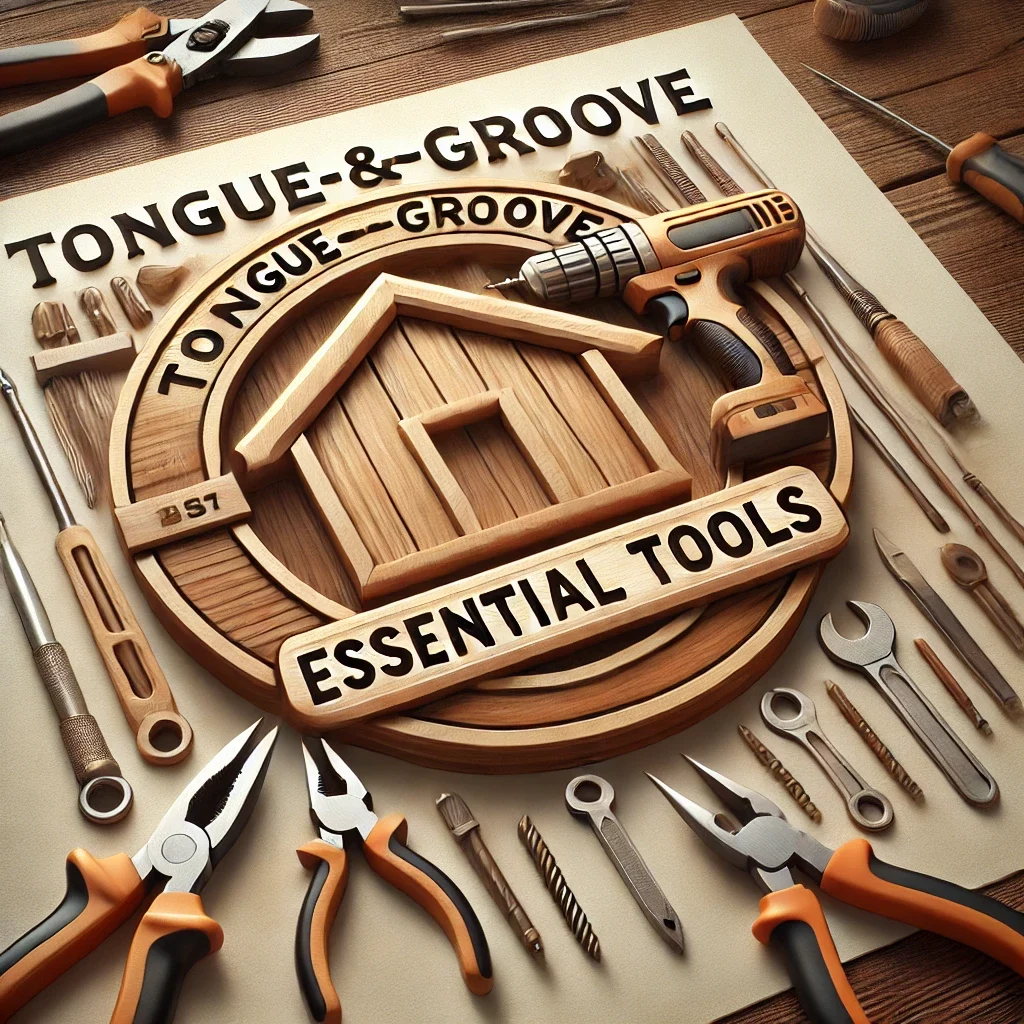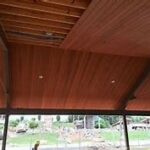Ever wondered why some floors fit together seamlessly or how certain paneling manages a snug fit without visible nails? Enter the world of tongue and groove, the unsung hero of woodworking and construction that’s been holding pieces together—literally—for centuries.
Tongue and groove refers to a method of fitting similar objects edge-to-edge, used mainly in woodworking and construction. This technology is as practical as it is clever, giving surfaces a consistent, aligned look while reinforcing their structure.
Whether it’s flooring, ceilings, or wall paneling, tongue and groove bring both an aesthetic appeal and structural integrity. But with so many choices out there, knowing the ins and outs—plus a few insider tips—can help you achieve the best results for your project.
In this blog post, we’ll navigate through the essentials of tongue and groove, covering everything from the basics to the more nuanced details. Whether you’re a DIY enthusiast or just curious, prepare to unlock the secrets behind those perfectly joined surfaces.
What is Tongue and Groove?
Tongue and groove is a joinery method used to connect flat pieces of wood. Each piece has a protruding "tongue" on one edge and a matching "groove" on the opposite edge. This design allows the pieces to fit tightly together, interlocking seamlessly.
The Purpose Behind the Design
This method is not just about fitting pieces together. It’s about locking them in place, which helps prevent movement and warping. This stability is especially useful for materials that undergo changes in humidity and temperature, such as wood.
Generally used in flooring, paneling, and decking, tongue and groove adds a level of precision that’s hard to achieve with other methods. Because one edge fits into the other securely, the resulting surface looks and feels professional and clean—with no gaps or visible fasteners.
By knowing how this system works, you can better appreciate its role in various construction projects. Plus, you might even be inspired to tackle your own tongue and groove project! Whether you’re aiming for aesthetic beauty or structural integrity, understanding this joinery method is the first step toward success.

Benefits of Tongue and Groove Flooring
Tongue and groove flooring boasts a range of advantages, making it a popular choice for homeowners and builders alike. One of the standout perks is its ease of installation. The design naturally guides the planks into place, allowing even DIY enthusiasts to tackle projects with confidence.
Once installed, the interlocking mechanism provides stability and a flush surface. This snug fit reduces the chance of gaps forming over time, which means fewer creaks underfoot and a more silent, peaceful home environment.
Furthermore, the seamless appearance of tongue and groove flooring elevates the aesthetic appeal of any room. Without visible nails or screws, the wood showcases its natural beauty, offering a smooth, continuous look that enhances any decor style.
Durability is another major benefit. The secure fit helps withstand daily wear and tear, ensuring longevity. This makes tongue and groove flooring an investment that pays off in the long run, maintaining its elegance and integrity years down the line.
Installation Process of Tongue and Groove Panels
Installing tongue and groove panels can be a gratifying project that transforms your space with minimal fuss. Whether it’s flooring, wall paneling, or a ceiling, the installation process follows similar basic steps.
Preparing Your Space
Begin by preparing the area where the panels will be installed. Ensure the surface is clean, dry, and level to provide a sturdy foundation for your new project. Gather your materials, including the panels, a saw for cuts, a rubber mallet, and a tape measure.
Before installation, let the panels acclimate to the room’s environment. This helps avoid expansion or contraction after the panels are in place, ensuring a snug fit long-term.
The Installation Steps
Start by laying the first panel with its groove facing the wall. This helps stabilize the first row and makes it easier to join subsequent pieces. As you add each panel, fit the tongue into the groove of the previous panel, gently tapping them together with a rubber mallet for a tight fit.
Continue the process, making precise cuts as needed at the ends of rows or near fixtures. Always double-check measurements before cutting to avoid mistakes. Once all panels are in place, inspect the seams for any gaps and make adjustments as necessary.
Ultimately, patience and attention to detail will reward you with a professional-looking finish that’s both durable and visually appealing. Enjoy your new space and the satisfaction of a job well done!
Common Issues and Maintenance Tips
While tongue and groove panels are a fantastic choice for their durability and aesthetic appeal, they can occasionally present challenges. One common issue is the possibility of warping, especially in high-humidity areas. To mitigate this, ensure your panels are well-sealed to protect against moisture.
Gaps can form over time if the panels weren’t installed correctly or if they experience significant temperature changes. Regularly checking for any shifts or loose panels allows you to address these minor issues before they become major problems.
Maintenance is key to preserving the beauty and functionality of your tongue and groove installations. Regular cleaning with a gentle cleaner helps maintain the wood’s finish and prevents scratches. For floors, using rugs or mats in high-traffic areas minimizes wear.
If you discover a panel has been damaged, it’s often possible to replace just that section without disrupting the entire setup. Keeping a few extra panels on hand from the original installation can make this task easier and ensure a perfect match.
By staying attentive to these common issues and following simple maintenance routines, you can enjoy the beauty and performance of your tongue and groove panels for years to come.
Recommended Tongue and Groove Products
Choosing the right tongue and groove products can make all the difference in your project’s success. With a variety of materials and styles available, it’s easy to find something that suits both your aesthetic preferences and practical needs.
For those prioritizing durability, consider engineered wood options. These products offer the beauty of hardwood while providing enhanced resistance to moisture and wear. Engineered wood panels are especially suitable for areas like bathrooms or basements where humidity levels fluctuate.
Top Picks for Natural Beauty
If natural wood is what you desire, oak and pine are classic choices. Oak offers robust strength and eye-catching grain patterns, making it ideal for statement flooring or feature walls. Pine, on the other hand, provides a warm, rustic feel with its lighter, more subtle colors—perfect for cozy spaces.
Consider vinyl or laminate if you’re looking for tongue and groove products on a budget. These materials mimic the appearance of real wood or stone but are often more affordable and easier to maintain, making them a practical option for family homes.
Each material brings its own set of benefits, so think about your specific requirements and aesthetic goals before making a decision. Whatever you choose, you’ll find that the right tongue and groove product can dramatically enhance your space, offering both beauty and functionality.
The Bottom Line: Enhancing Your Space with Tongue and Groove
Tongue and groove is more than just a construction technique; it’s a way to beautifully enhance your living space. With its simple yet effective interlocking mechanism, this method ensures durability and a seamless look that elevates the aesthetic quality of any room.
From flooring to wall paneling, tongue and groove offers versatility. It allows you to tailor the perfect solution for your home—whether you’re aiming for a traditional, rustic appeal or a sleek, modern vibe. By choosing the right materials, you can create spaces that are not only visually appealing but also resilient to everyday wear and tear.
Installation, while straightforward, still demands attention to detail. However, the benefits of taking the time to do it right are well worth the effort. The result is a polished finish, free from gaps and imperfections, which speaks volumes about your space and your personal taste.
Maintaining your tongue and groove installations ensures longevity, helping you avoid common pitfalls like warping or gaps. With regular upkeep, you can keep your surfaces looking brand new for years to come.
Ultimately, the beauty and functionality of tongue and groove make it a top choice for those looking to improve their interiors. Whether you are undertaking a renovation project or starting from scratch, integrating tongue and groove elements can transform your space, making it both inviting and enduring.
So, why not give tongue and groove a try? With its timeless benefits and the ability to add character to any room, it’s an investment in both style and quality that you won’t regret.


